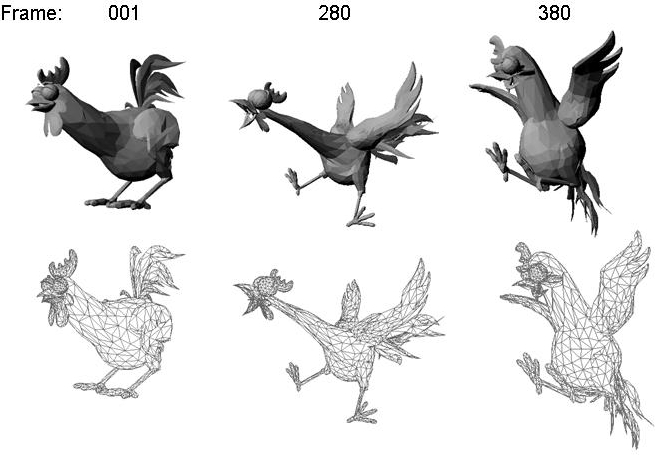Animated 3D content is becoming an integral part of many applications. It is already employed in numerous domains ranging from video games, animation movies, CGI films, and special effects to scientific visualization and CAD. In all these domains exists an increasing demand for efficient storage of animated 3D content. Furthermore, transmission of animated 3D content over different types of access networks (like the Internet, local area networks, or mobile networks) using different types of receiving devices (like PCs, laptops, PDAs, and smart phones) gains increasing importance. This imposes additional requirements to compressed data, since it has to be adaptable to network transfer rates and end-user devices.

The goal of this project is to develop an efficient compression scheme for dynamic 3D meshes. The compression scheme should fulfill the following requirements. It should
Connectivity is encoded once in the beginning of the encoding process. Based on this connectivity at the encoder and decoder a layered decomposition is derived using mesh simplifications. This produces a hierarchical mesh which is exploited to encode vertex positions of each frame using spatial layers. This allows frame-wise reconstruction from coarse to fine at the decoder. Dependencies between spatial layers of the same frame and neighboring frames are exploited for efficient compression using a closed loop DPCM. Encoded spatial layers of the current frame and encoded spatial layers of reference frames are exploited for prediction of vertex positions, which are part of the currently encoded spatial layer. Obtained prediction errors of each frame are also organized in spatial layers. For each spatial layer they are encoded using separate entropy encoders. This allows spatial scalability. Furthermore, frames have not to be encoded in display order. Other frame orders like hierarchical B-frame order are allowed, which provides additionally to spatial scalability also temporal scalability.

This coding architecture is adopted in the MPEG-4 standard which is referred to as MPEG-4 FAMC (MPEG-4, Part 16, Amd. 2, Frame-Based Animated Mesh Compression).